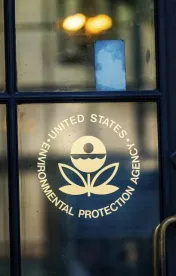We previously reported on the EPA’s expansion of the Toxics Release Inventory (TRI) reporting requirements to include 189 types of PFAS. Now, the EPA is prepared to send a proposal to the White House Office of Management and Budget (OMB) that would curtail the “de minimus exemption” to TRI PFAS reporting. The proposal will have enormous impacts on numerous companies from a compliance standpoint, as well as increase risk for future PFAS litigation.
The EPA’s actions continue to broaden the impact on industry to comply with the significant reporting obligations. For any company that manufactures, imports, or utilizes PFAS, it is critical to pay attention to these developments, as well as take a forward-looking compliance assessment approach to likely future expansion of the PFAS reporting requirements.
Newest TRI PFAS Reporting
The EPA added nine PFAS types to the TRI reporting requirements in January 2023, which triggered a requirement for companies to begin collecting the required data in 2023, with reporting forms due July 1, 2024. The total number of PFS now subject to TRI reporting obligations is 189.
At the end of July 2023, the EPA notified the OMB of its intent to send for OMB review a proposed rule that would eliminate the “de minimus exemption” to TRI reporting for companies that discharge less than 100 pounds of chemicals listed under the TRI annually. The EPA also signaled it intent to have the review process complete and a final rule promulgated by November 30, 2023. The mechanism by which the EPA intends to effectively eliminate the “de minimus exemption” for PFAS under TRI is to designate the TRI-listed PFAS as “chemicals of special concern” (CSC). CSCs are automatically ineligible for the “de minimus exemption.” Achieving the CSC result would accomplish an EPA goal under its PFAS Roadmap plan in which it stated a goal of removing eliminating the “de minimus exemption” from PFAS considerations.
Impact On Businesses
The TRI reporting expansion continues the EPA’s trend of added increasing numbers of PFAS to the TRI. The goal of the EPA is to obtain as much data as possible regarding use, discharge, and disposal of the listed PFAS as possible so that it can understand use and pollution risks of the PFAS. Businesses utilizing any of the PFAS listed under the TRI must undertake every step necessary to comply with the reporting requirements set forth under the TRI. With 189 PFAS on the TRI list, companies must plan now for specific and targeted testing plans to ensure necessary TRI compliance. Companies utilizing PFAS not yet on the TRI must look to the future and prepare now for the possibility that additional PFAS will be added to the TRI, thereby increasing the company’s reporting burdens and increasing the risk for potential lawsuits by citizens, interest groups, or regulatory agencies for pollution.
Companies must also consider that any PFAS information reported under the TRI in July 2024 and beyond will be discoverable information by plaintiffs’ attorneys looking for information to support environmental pollution lawsuits, including class action lawsuits brought by private citizens. Information about discharges will provide plaintiffs’ attorneys with a roadmap for determining “hot spot” litigation areas in the country. Companies must be aware of this likelihood and factor it into its internal risk assessment when considering action steps related to PFAS and TRI reporting.




 />i
/>i
